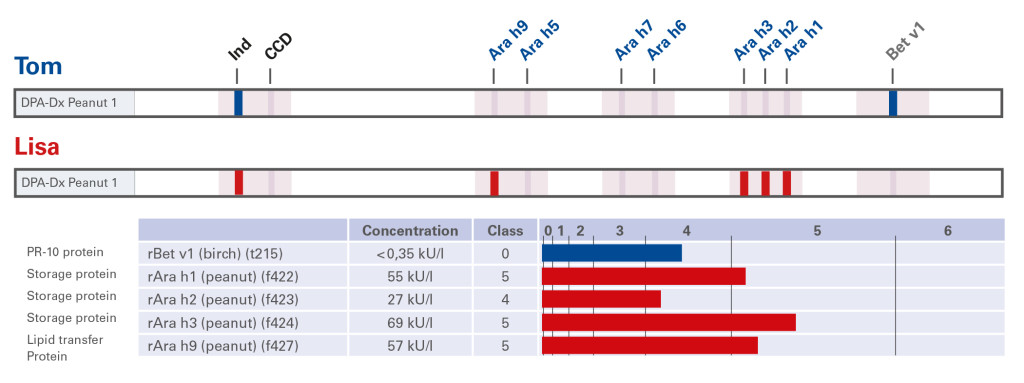Two children, Lisa and Tom, are tested for different food allergies with a skin test by an allergist at the same day, since both children complain about various symptoms such as oral prickling, rashes and nausea. In both cases, the allergy test indicates an obvious immune reaction against peanut extract – a diagnostic agent which is gained from the whole nut and contains all peanut allergens. The result implies that the children need to avoid every contact with peanuts and take an emergency stick everywhere they go because peanut allergies belong to the major causes of anaphylaxis, a severe systemic body reaction to an allergen, which varies from cramps and vomiting to serious circulatory collapse (anaphylactic shock). Thus, the diagnosis requires huge rearrangements and cautiousness in everyday life. The fear of fatal consequences, caused by hints of peanut in any kind of food restricts the life quality of the children and their families.
However, although the tests revealed the same result, the allergies of Lisa and Tom are not the same – a fact which is not recognised by extract-based diagnostics. These cannot indicate whether severe reactions are likely after a contact with the allergen. Only results from differentiated diagnostics based on individual allergen components (defined partial allergens, DPA) allow conclusions about the severity of an allergy.
The allergen source “peanut“ is composed of various components which a person may be sensitized to and react allergic in different ways. Sensitization to specific components such as Ara h1, h2, h3, h6, h7 or h9 hold a high risk for severe systemic reactions while immune responses to the component Ara h8 can usually be attributed to a cross reaction to the birch pollen component Bet v1. This cross allergy manifests with only mild symptoms in the mouth area (oral allergy syndrome).
The children were examined again and serum samples were tested with the novel immunoblot EUROLINE DPA-Dx Peanut 1. This line blot discriminates between sensitizations to seven different peanut components (Ara h1, h2, h3, h5, h6, h7, h9) and the birch pollen component Bet v1 (cross reactive with Ara h8):
Lisa is sensitized to the specific components Ara h1, Ara h2, Ara h3 and Ara h9. She will need to have the emergency stick with her at all times in case of an anaphylactic shock after an inadvertent contact with peanuts. Tom, however, is only sensitized to Bet v1, his allergic reaction to peanuts is due to a cross reaction. Therewith, he has no “true” peanut allergy and there exists no serious risk of anaphylaxis. Major restrictions and rearrangements in his daily life are luckily not required.
Thus, sensitizations which seem to be the same in extract-based diagnostics can be examined in a much more sophisticated way with the help of modern allergy diagnostics using defined partial allergens. These provide information for an improved and more specific therapy and individual risk assessments for every patient.


